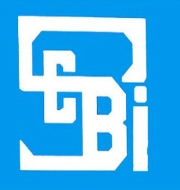SEBI Proposes New Guidelines for ESG Rating Providers
The Securities and Exchange Board of India (SEBI) has recently introduced new guidelines for Environmental, Social, and Governance (ESG) Rating Providers (ERPs). These measures aim to enhance transparency and accountability in the ESG rating process. The guidelines clarify the conditions under which ERPs can withdraw ratings and disclose their rationale. This initiative reflects the growing importance of ESG factors in investment decisions.
Types of Revenue Models
- SEBI categorises ERPs into two revenue models – subscriber-pays and issuer-pays.
- Each model has distinct rules regarding rating withdrawals.
- The subscriber-pays model allows ERPs to withdraw ratings only if there are no active subscribers.
- In contrast, the issuer-pays model has stricter conditions, requiring a minimum rating period of three years or halfway through the security’s tenure, along with approval from 75% of bondholders.
Rating Withdrawals
- For the subscriber-pays model, ERPs can withdraw ratings when there are no subscribers. If a rated entity is part of a package, such as the Nifty 50 index, the rating remains intact.
- The issuer-pays model mandates a longer commitment before withdrawal. This structure aims to ensure stability and confidence in ESG ratings.
Disclosure Requirements
ERPs are required to share detailed rating rationales with their subscribers only. They must not publish these reports on their websites. However, ESG ratings must be displayed in a specified format. This regulation seeks to protect sensitive information while maintaining a level of transparency.
Stock Exchange Regulations
Stock exchanges must prominently disclose ESG ratings of listed companies. This will be available under a dedicated section for easy access by investors. Such visibility is intended to enhance the credibility of ESG ratings in the market.
Internal Audit and Compliance
- Category-I ERPs must comply with internal audit requirements immediately.
- For Category-II ERPs, these requirements will take effect after two years.
- This phased approach considers the operational challenges faced by newer providers.
- The guidelines also require the formation of ESG Ratings Sub-Committees and Nomination and Remuneration Committees, with a two-year grace period for Category-II ERPs.
Differences Between ERP Categories
- Category-I ERPs can certify green debt securities and must maintain a liquid net worth of Rs. 5 crores. They are also required to have at least four employees.
- Category-II ERPs, on the other hand, cannot certify green debt securities and only need a liquid net worth of Rs. 10 lakh. They can operate with just two employees, allowing for greater flexibility.
Public Feedback and Future Steps
SEBI has invited public comments on these proposed measures until March 6. The feedback will play important role in finalising the guidelines. The new regulations aim to strengthen the ESG rating framework, ensuring that it meets both market needs and investor expectations.
Month: Current Affairs - February, 2025
Category: Economy & Banking Current Affairs







